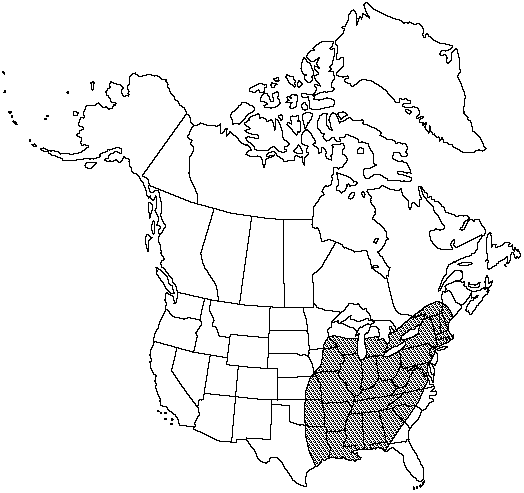Stems compact to short-creeping, individual branches usually 5–10 mm diam. Blade coarsely cut and evidently 2-pinnate. Proximal pinnules of lower pinnae usually shallowly lobed or merely dentate. Spores averaging 42–47 µm. 2n = 152.
Phenology: Sporulating summer–fall.
Habitat: Cliffs and rocky slopes (rarely terrestrial), found on a variety of substrates including both granite and limestone
Elevation: 0–1000 m
Distribution

Ont., Que., Ala., Ark., Conn., Del., Fla., Ga., Ill., Ind., Iowa, Kans., Ky., La., Maine, Md., Mass., Mich., Minn., Miss., Mo., Nebr., N.H., N.J., N.Y., N.C., Ohio, Okla., Pa., R.I., S.C., Tenn., Tex., Vt., Va., W.Va., Wis.
Discussion
D. F. M. Brown (1964) hypothesized that tetraploid Woodsia obtusa might be an autopolyploid derived from W. oregana. Recent isozyme and spore ornamentation studies indicate, however, that these species are not closely related, and the discovery of a diploid cytotype of W. obtusa suggests a different (albeit autopolyploid) origin for this taxon (M. D. Windham 1993). Tetraploid subsp. obtusa crosses with diploid subsp. occidentalis; the resulting triploids are sterile and have malformed spores. It also hybridizes with W. oregana subsp. cathcartiana to form the sterile tetraploid hybrid known as W. × kansana Brooks.
Selected References
None.
Lower Taxa
"/5lengthofblade" is not declared as a valid unit of measurement for this property."broad" is not a number."thick" is not a number.